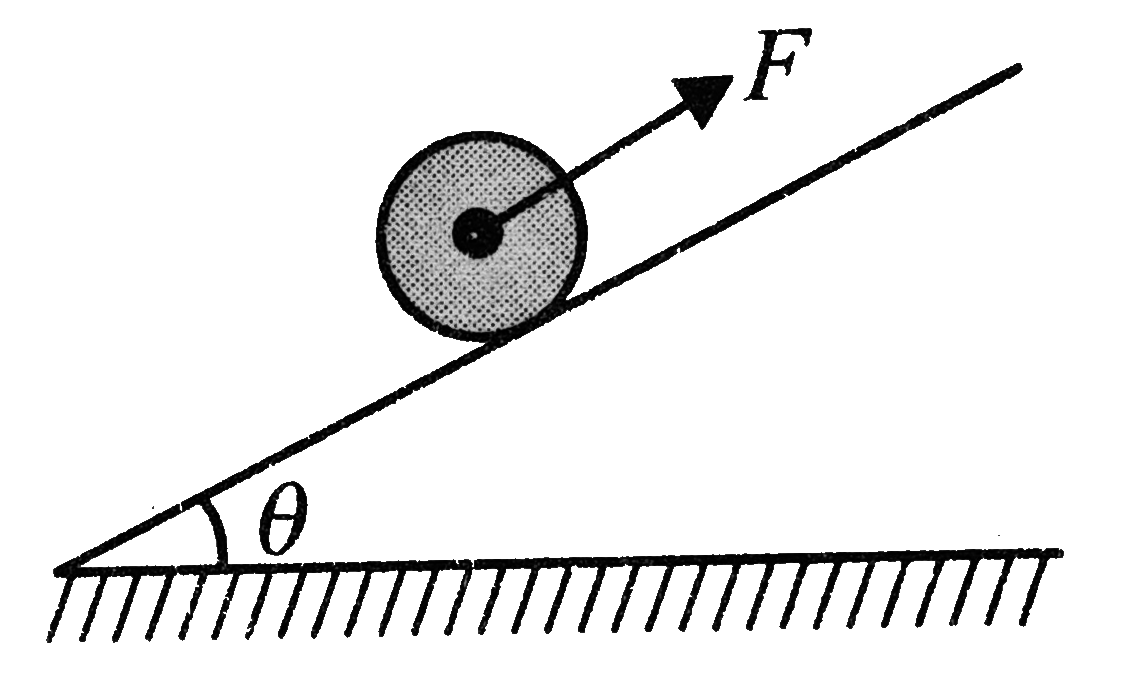Statement 1: While drawing a line on a paper by pencil, friction force acts on paper in the same direction along which line is drawn on the paper. Statement 2: Friction always opposes motion.
Statement-1 is true, Statement-2: is true, Statement-2 is a correct explanation for Statement-1.
Statement-1 is true, Statement-2: is true, Statement-2 is NOT a correct explanation for Statement-1.
Statement-1 is true but statement-2 is false
Statement-1 is false, Statement-2 is true
The correct Answer is:C
Friction always oppose relative motion.
Topper's Solved these Questions
Similar Questions
Statement - 1 : Maximum value of friction force between two surfaces is μ× normal reaction.
where μ = coefficient of friction between surfaces.
Statement - 2 : Friction force between surfaces of two bodies is always less than or equal to externally applied force.
View SolutionStatement- 1: Motion of a charged particle under the action of a magnetic field alone is always with constant speed. Statement- 2 : The direction of magnetic force is always perpendicular to the direction of motion of the charged particle.(1) Both Statements are true (2) Both Statements are false (3) Statement-1is true but Statement-2is false (4) Statement-1is false but Statement-2is true
View Solution
Knowledge Check
Assertion : The force of tension on a body always act away from the body.
Reason: Friction force always opposes the motion of a body.AIf both assertion & Reason are True & the Reason is a corrrect explanation of the Asserion.BIf both Assertion & Reason are True but Reason is not correct explanation of the Assertion.CIf Assertion is Trie but the Reason is False.DIf both Assertion & Reason are falseThis section contains Assertion (A) and Reason (R) type questions. Each question has 4 choices (a), (b), (c) and (d), out of which only one is correct.
Assertion (A) The direction of the friction force on an object is opposite to the actual motion (kinetic friction) or the impending motion (static friction) for the olyect relative to the surface with which it is in contact
Reason (R) Friction force always opposes the motion.ABoth Assertion and Reason are correct and Reason Is the correct explanation of the AssertionBBoth Assertion and Reason are correct but Reason is not the correct explanation of AssertionCAssertion Is correct but Reason Is IncorrectDAssertion Is Incorrect but Reason Is correctStatement I: A disc is allowed to roll purely on an inclined plane as shown in Fig. A force F parallel to the incline and passing through the centre of the disc acts which remains constant during the motion.
It is possible that for certain values of F, the friction on the disc is acting along downward direction and for certain other values of F, the friction on the disc be acting along upward direction and there is no other possibility.

Statement II: The friction (if acting) will be static and not kinetic in nature.AStatement I is True, Statement II is True, Statement ll is a correct explanation for Statement I.BStatement I is True, Statement II is True, Statement II is NOT a correct explanation for Statement ICStatement I is True, Statement II is False.DStatement I is False, Statement II is True.
Statements: 1. Some papers are pens
2. Angle is a paper
Conclusions: 1. Angle is not a pen
2. Angle is a pen
View Solutionwhich of the following describe a frictional force?
I. frictional force always opposes the motion of an object.
II. Frictional force is parallel to the surface in contact.
III. Frictional force always produces heat.
IV. Frictional force can be increased or reduced.
View SolutionThese questions consists of two statements each printed as Assertion and Reason. While answering these question you are required to choose any one of the following four responses
Assertion: Friction always opposes the relative motion of two bodies.
Reason: Without friction also, one can move on a smooth surface.
View Solution(A) : Force of friction applied by ground on the wheels of a bicycle is always in the direction of motion of the bicycle .
(R) : Force of friction always opposes the relative motion between the surfaces in contact .
View SolutionAssertion :− When a man climbs the rope friction force acts in downward direction.
Reason :− Friction force opposes relative motion ot tendency of relative motion between two contact surfaces.
View Solution
